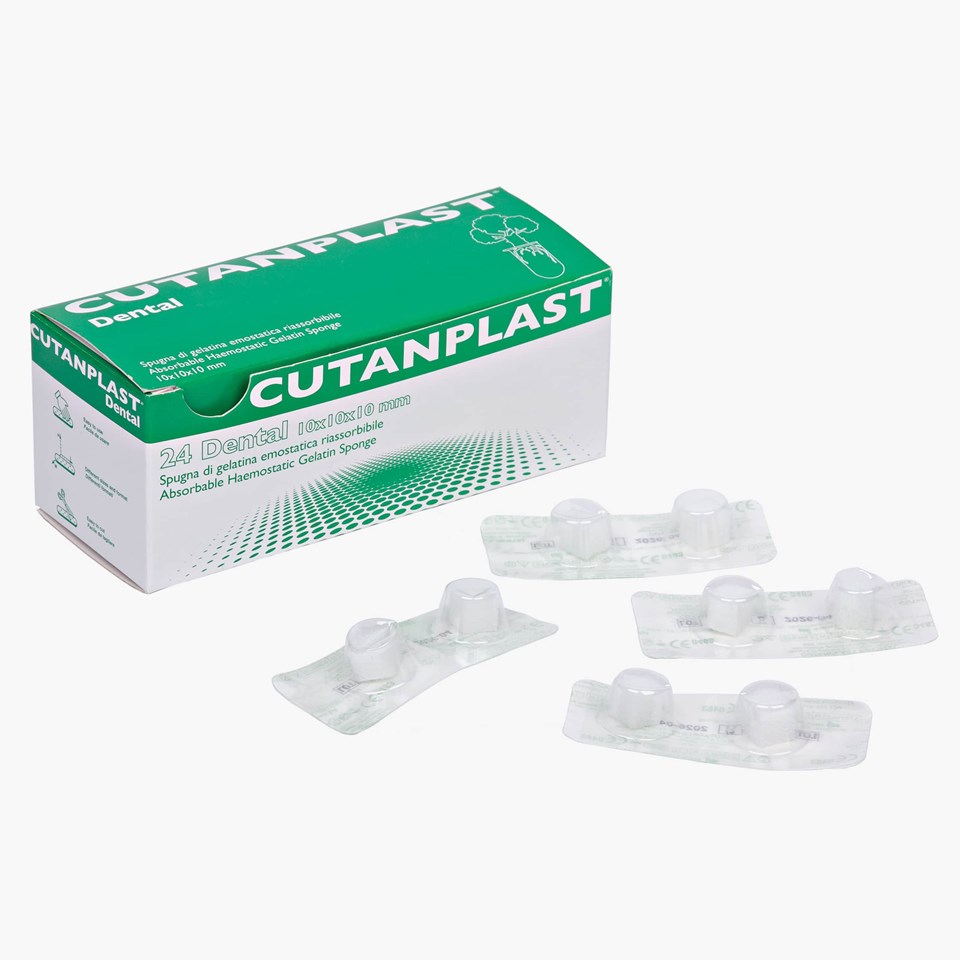
Haemostatic sponges offer a quick relief to the patient after a dental extraction. It is ideal for bleed control.
On this page, you will discover:
Have you ever had to undergo a surgery or a dental procedure which involved bleeding? If the answer is “yes”, then you may have come across a haemostatic dental sponge. This product plays a crucial role in modern dentistry and oral surgery procedures.
Let’s discover how a haemostatic sponge works.
First and foremost, this item has a control function over bleeding. In fact, it is typically made from a spongy material such as gelatin or collagen that quickly soaks up with blood when applied to the bleeding site, forming a gel-like barrier which helps the clotting process. In this way, the wound is sealed up and secured, speeding up the body’s natural healing process.
In the dental field, haemostatic sponges are an essential item in procedures such as tooth extractions, periodontal surgeries, implants and other surgical procedures which cause bleeding. With this product, you will be able to control blood flow, promoting a safer and more comfortable experience during surgery both for the patient and the dentist.
When it comes to the selection of the most suitable haemostatic sponge, it is important to keep in mind its characteristics.
Haemostatic sponges are usually:
For their composition and thanks to the materials they are made of, the chance of surgical complications such as infections, traumas, allergic reactions and rejectionin procedures that involve sponges are minimal. In case it is necessary to remove them, the process is easy and painless.
Haemostatic dental sponges should be used and applied by a professional dentist or an oral surgeon after a procedure involving bleeding. In this case, the doctor in charge of the procedure should use asterile sponge and apply it directly to the wound.
Depending on the wound characteristics, the dentist can opt for the application of more than one sponge. Once the bleeding is under control, the sponge can be removed or left in place, based on recovery needs.
For a seamless recovery, the patient should follow the dentist’s post-procedure instructions to ensure proper healing and avoid removing the sponge too soon. In some cases, some additional measures might be required.
These sponges, with their haemostatic properties, contribute greatly to the field of dentistry by enabling safer and more efficient surgical procedures.
Cutanplast is a soft and malleable haemostatic dental sponge in the form of cubes.
It ensures maximum healing efficiency because:
Dispotech’s Cutanplast can be cut and shaped based on the operator’s requirements. This haemostatic sponge appears to be extremely effective and fast relief during the healing process.
Discover Cutanplast properties